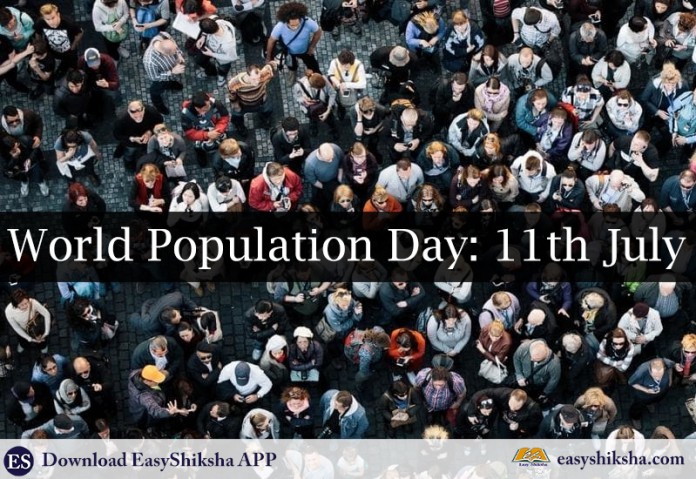There are about 7.2 billion of people on earth and this number is still increasing 1.10 percent. That means we have 83 million new people on earth annually. UN each year have a different theme for each occasion. Back in 2003 the theme was “1 Billion Adolescents”. This year theme is “Family Planning is Human Right”. 2018 is the year of 50th anniversary of 1968 Conference on Human Rights. India was the first country to adopt family planning but still it got issues with population.

Important Announcement – EasyShiksha has now started Online Internship Program “Ab India Sikhega Ghar Se”

Top 10 Facts about World Population Day
-
There were around 400 million people on the planet in 1000 AD and it would take 804 years before the world would add enough people to reach 1 billion by 1804. However, to add another 2 billion to bring the world population up to 3 billion in 1960, it took only about 156 years.
-
Since the 1960s, the global birth rate has fallen to an average of 2.5 births per woman. However, that average is made up of highly diverse figures: in Africa its 4.7 births per woman, in Europe it’s 1.6 births per woman.
-
The world’s population is growing by 1.10 percent per year, or about an additional 83 million people annually. The global population is expected to reach 8.6 billion in 2030, 9.8 billion in 2050 and 11.2 billion in 2100.
-
According to National Health Family Survey 2015-16 (NFHS-4), female sterilization continues to be the most widely used method of contraception in India – accounting for over 75% of the modern family planning methods used.
-
To encourage men to share the burden of family planning, the government has taken a number of initiatives, which includes the promotion of male sterilization, a compensation scheme for sterilization acceptors, etc.
-
It is estimated that about 14 crore couples are currently using modern methods of contraception. This means about four crore unintended pregnancies, 80 lakh births, 13 lakh unsafe abortions and 21,600 maternal deaths would be averted in 2018.
-
India’s maternal mortality rate reduced by 83 percent from 212 deaths per 100,000 live births in 2007 to 178 deaths in 2012. While the global maternal mortality ratio has declined by 44 percent- from 385 deaths to 216 deaths per 100,000 live births.
-
Despite correcting the employment problem, India is expected to become the World’s youngest country with 64 percent of its population in the working age by 2020.
-
An increasing number of people are living to a ripe old age. In 1950, there were far more young than old. In 2017, there are fewer young and more older people. By 2050, the numbers will even out.
Top Courses in Computer Science Engineering Top Courses in Software Engineering
Loading...More Courses With Certification
-
The initiatives taken by the government of India in implementing the Family Planning Programme have a significant impact on the country as a whole. Over the years, family planning measures have shifted from withdrawal (before ejaculation) to intra-uterine contraceptive devices (IUCDs), and then to contraceptive pills.
——————————————————————————————————————————-
Sign up with EasyShiksha and get free online education account. You can access more than 50 free online courses, various computer and govt exam test series and find your career options. You can Sign up with Facebook
Empower your team. Lead the industry
Get a subscription to a library of online courses and digital learning tools for your organization with EasyShiksha
Request NowALSO READ: Dhe-odisha-3-admission-merit-list-is-declared-today
Get Course: Basic-of-E-Commerce
















































































